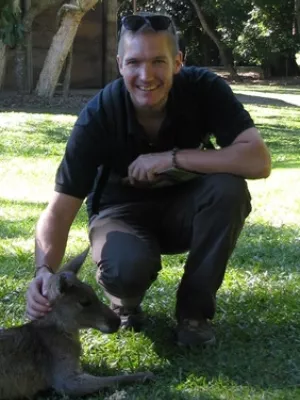
Paul Caplat
Researcher

Impacts of global change on species distributions : Obstacles and solutions to integrate climate and land use
Author
Summary, in English
Aim The impact of multiple stressors on biodiversity is one of the most pressing questions in ecology and biodiversity conservation. Here we critically assess how often and efficiently two main drivers of global change have been simultaneously integrated into research, with the aim of providing practical solutions for better integration in the future. We focus on the integration of climate change (CC) and land-use change (LUC) when studying changes in species distributions. Location Global. Methods We analysed the peer-reviewed literature on the effects of CC and LUC on observed changes in species distributions, i.e. including species range and abundance, between 2000 and 2014. Results Studies integrating CC and LUC remain extremely scarce, which hampers our ability to develop appropriate conservation strategies. The lack of CC-LUC integration is likely to be a result of insufficient recognition of the co-occurrence of CC and LUC at all scales, covariation and interactions between CC and LUC, as well as correlations between species thermal and habitat requirements. Practical guidelines for the study of these interactive effects include considering multiple drivers and processes when designing studies, using available long-term datasets on multiple drivers, revisiting single-driver studies with additional drivers or conducting comparative studies and meta-analyses. Combining various methodological approaches, including time lags and adaptation processes, represent further avenues to improve global change science. Main conclusions Despite repeated claims for a better integration of multiple drivers, the effects of CC and LUC on species distributions and abundances have been mostly studied in isolation, which calls for a shift of standards towards more integrative global change science. The guidelines proposed here will encourage study designs that account for multiple drivers and improve our understanding of synergies or antagonisms among drivers.
Department/s
- Centre for Environmental and Climate Science (CEC)
- BECC: Biodiversity and Ecosystem services in a Changing Climate
Publishing year
2017-04
Language
English
Pages
385-394
Publication/Series
Global Ecology and Biogeography
Volume
26
Issue
4
Document type
Journal article
Publisher
Wiley-Blackwell
Topic
- Ecology
- Environmental Sciences
Keywords
- Antagonisms
- Climate change
- Community indices
- Land-use change
- Range shift
- Synergies
Status
Published
ISBN/ISSN/Other
- ISSN: 1466-822X